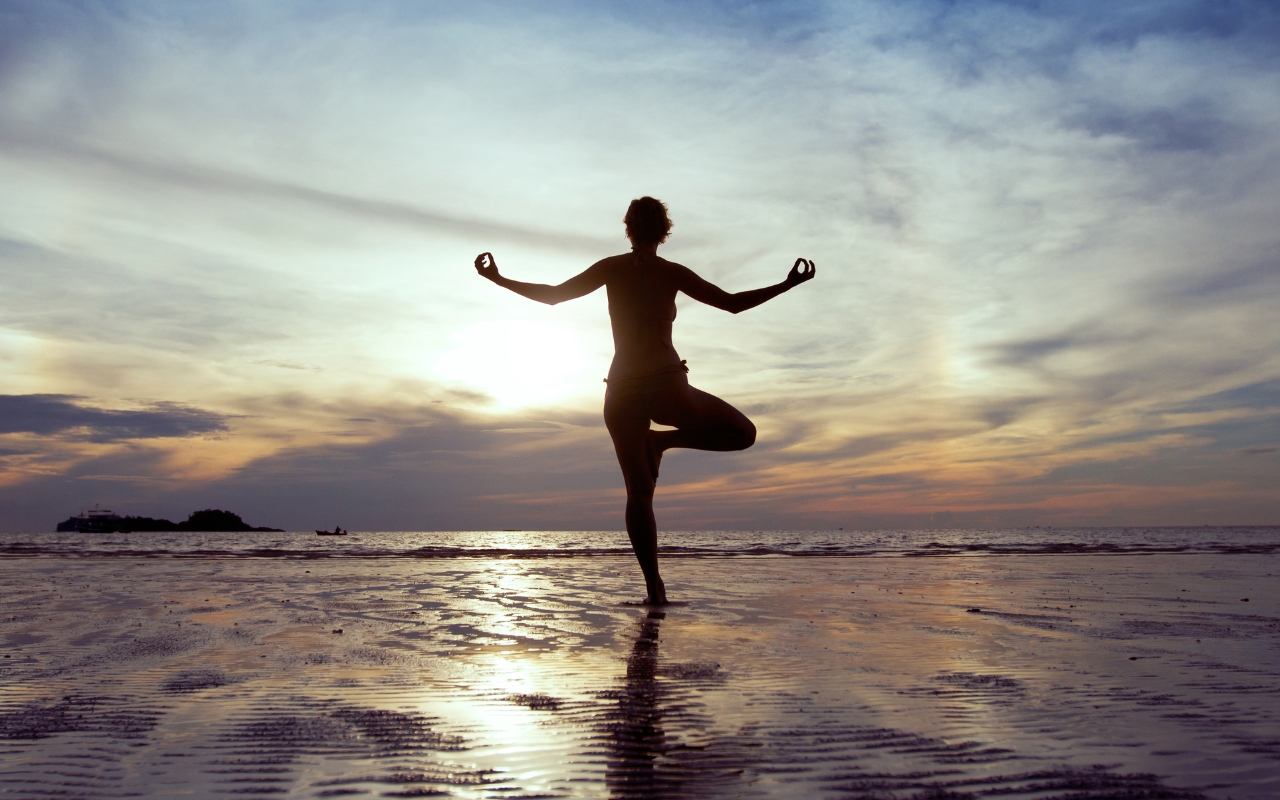Fitness
How can I improve my balance and coordination?
Published
2 years agoon
By
mbkteam
Balance is a fundamental aspect of physical fitness that often goes overlooked. It's an essential ability that impacts every movement we make, from the simplest tasks like walking and standing to more complex activities such as running, jumping, and dancing. Maintaining and improving balance is crucial for everyone, regardless of age or fitness level, as it enhances overall stability, strengthens muscles, and prevents injuries, particularly falls. This article delves into the significance of balance exercises and presents a comprehensive guide to mastering them.
Balance, like any other skill, can improve with practice. As we age, changes in our musculoskeletal system, including weaker muscles and decreased bone density, can compromise our balance. The good news, however, is that incorporating specific exercises into your daily routine can significantly improve your balance and coordination, reducing the risk of falls and enhancing overall well-being.
The Importance of Balance Exercises
As highlighted by the Prevention and NHS articles, balance exercises are essential for various reasons:
- Enhanced Stability: Balance exercises help to strengthen the stabilizing muscles, which maintain your posture and keep you upright. These exercises target core muscles, lower body muscles, and even the smaller stabilizer muscles that are critical for balance.
- Injury Prevention: A good balance can help you avoid falls, which are a common cause of injuries, particularly among older adults. Improved balance ensures that you can recover quickly from slips and trips, reducing the likelihood of falls.
- Functional Fitness: Everyday activities such as walking, climbing stairs, bending, or carrying groceries require good balance. By improving balance, you can perform these activities more efficiently and with fewer risks of injury.
- Sports Performance: Athletes across various sports rely on excellent balance to enhance their performance. Balance training can improve overall athletic ability, making movements more precise and reducing the risk of sports-related injuries.
- Posture Improvement: Balance exercises promote better posture by strengthening the muscles that support the spine and improving body alignment. Good posture reduces the strain on muscles and joints, alleviating pain and discomfort.
Essential Balance Exercises
Incorporating balance exercises into your routine doesn't require specialized equipment or a gym membership. Many effective exercises can be done at home with minimal space. Below is a comprehensive guide to some of the best balance exercises that can help enhance your stability, strength, and flexibility.
1. Single-Leg Stance
The single-leg stance is a simple yet effective exercise to improve your balance. This exercise targets your lower body, particularly the muscles around your ankles, knees, and hips.
How to Perform:
- Stand upright with your feet together.
- Slowly lift one foot off the ground, bending your knee so that your thigh is parallel to the floor.
- Hold this position for as long as you can, aiming for at least 30 seconds.
- Repeat with the other leg.
To increase the difficulty, try closing your eyes or performing the exercise on an unstable surface like a cushion or a BOSU ball.
2. Heel-to-Toe Walk
The heel-to-toe walk is excellent for improving balance and coordination. It mimics the act of walking on a straight line and is particularly useful for enhancing mobility.
How to Perform:
- Stand upright and place your right heel directly in front of your left toe.
- Take a step forward, placing your left heel directly in front of your right toe.
- Continue walking in this manner for at least 10 steps, ensuring that each step is slow and controlled.
For added stability, you can position yourself close to a wall or use a chair for support.
3. Grapevine
The grapevine exercise involves crossing one foot over the other as you step sideways. This exercise improves lateral stability and coordination.
How to Perform:
- Stand with your feet together.
- Step your right foot over your left foot.
- Move your left foot to join it.
- Repeat this movement for 10 steps, then switch directions and step with your left foot over your right foot.
4. Lateral Thigh Lifts
Lateral thigh lifts target your outer thighs and hips, which are crucial for lateral movements and stability.
How to Perform:
- Stand on your right leg and lift your left leg to the side, keeping it straight.
- Hold this position for five seconds.
- Lower your left leg and repeat the movement five times.
- Switch legs and repeat.
For added difficulty, perform this exercise on a step or a less stable surface.
5. Tree Pose
The tree pose is a popular yoga pose that improves balance, concentration, and overall body awareness.
How to Perform:
- Stand upright near a wall or chair for support.
- Shift your weight onto your left leg and place your right foot on the inside of your left thigh or calf (avoid placing it directly on your knee).
- Bring your hands together in a prayer position in front of your chest.
- Hold this pose for 30 seconds to a minute, then switch legs.
To challenge yourself further, try extending your arms overhead or closing your eyes.
6. Single-Leg Squat
The single-leg squat is an advanced exercise that targets your quadriceps, glutes, and core muscles.
How to Perform:
- Stand on your right leg with your left leg lifted off the ground.
- Slowly bend your right knee, lowering your body into a squat position.
- Keep your left leg extended in front of you for balance.
- Return to the starting position and repeat five times.
- Switch legs and repeat.
Start with shallow squats and gradually lower yourself deeper as you build strength and confidence.
7. Balancing Half Moon
The balancing half moon pose is another yoga-inspired exercise that strengthens your core, glutes, outer thighs, feet, and ankles.
How to Perform:
- Start in a high lunge with your right foot extended back.
- Bend your left knee and place your fingertips just beyond the top of your mat.
- Lift your right foot off the mat and stack your right hip over your left.
- Hold this position for five breaths and then switch sides.
For a greater challenge, gaze up at the sky or remove your right hand from your hip and reach it upwards.
Tips for Effective Balance Training
To get the most out of your balance workouts, consider the following tips:
- Find a Partner: Working out with a partner who can spot you adds an extra layer of safety, especially when trying new exercises or challenging poses.
- Supportive Footwear: Start with supportive sneakers, but as you get stronger, perform the exercises barefoot to engage the muscles that stabilize your feet.
- Use a Focal Point: Focus on a fixed object while performing balance exercises to help maintain stability.
- Progress Gradually: Start with simpler exercises and slowly progress to more challenging ones as your balance improves.
- Add Resistance: Incorporate dumbbells or a BOSU ball to increase the intensity and effectiveness of your workout.
Benefits Beyond Balance
Improving your balance doesn't just enhance stability and prevent falls; it brings numerous other health benefits:
- Core Strength: Many balance exercises engage the core muscles, helping to tone and strengthen the abdomen and lower back.
- Joint Health: Strengthening the muscles around your joints can improve joint stability and reduce the risk of injuries.
- Flexibility: Balance exercises often require stretching and lengthening muscles, which can improve overall flexibility.
- Coordination: Enhancing your balance also improves coordination, making everyday movements more fluid and efficient.
- Mental Focus: Many balance exercises require concentration and mindfulness, which can improve mental clarity and reduce stress.
Incorporating Balance Exercises into Your Routine
Including balance exercises in your fitness regimen doesn't require a complete overhaul of your current routine. Here are some easy ways to integrate these exercises seamlessly:
- Warm-Up: Begin your workout with balance exercises as a warm-up. This prepares your muscles for more strenuous activities and enhances your overall workout.
- Daily Activities: Incorporate balance exercises into everyday tasks. For instance, practice standing on one leg while brushing your teeth or washing dishes.
- Combine with Strength Training: Add balance elements to your strength training routine. For example, perform bicep curls while standing on one leg or do squats on an unstable surface.
- Yoga and Pilates: Both yoga and Pilates are excellent for improving balance. Incorporate these practices into your weekly routine to benefit from their focus on stability and coordination.
- Short Sessions: Even short, 5-10 minute balance workouts can be beneficial. Consistency is key, so aim to practice balance exercises several times a week.
Expert Insights
Experts emphasize the importance of balance training for maintaining functional fitness and overall health. As Nicole Glor, a fitness instructor and creator of NikkiFitness, notes, “The muscles we use to stand tall weaken ever so gradually after we hit 30.” Regular balance exercises can combat this decline, keeping you strong and steady well into your later years.
Glor also suggests that practicing balance exercises barefoot can strengthen the muscles that stabilize the feet, while using a focal point can aid in maintaining stability. For more advanced practitioners, she recommends incorporating tools such as a BOSU ball to increase the challenge.
Additional Resources
For further guidelines and expert recommendations on balance exercises, consider exploring the following resources:
- NHS Guide to Balance Exercises
- Mayo Clinic's Balance Exercise Recommendations
- Prevention's Top Balance Exercises
Conclusion
Balance exercises are a vital component of a well-rounded fitness routine. They enhance stability, prevent injuries, and improve overall physical health. By integrating balance exercises into your daily routine, you can enjoy the benefits of better coordination, strength, and flexibility.
Start with simple exercises like the single-leg stance and heel-to-toe walk, and gradually progress to more challenging moves like the single-leg squat and balancing half moon. Remember to practice consistently and incorporate the tips provided to maximize the effectiveness of your balance training.
Embrace the journey to better balance and stability—it will pay off in countless ways, from improved athletic performance to enhanced everyday function and a reduced risk of falls. Take the first step today and experience the transformative power of balance exercises.













